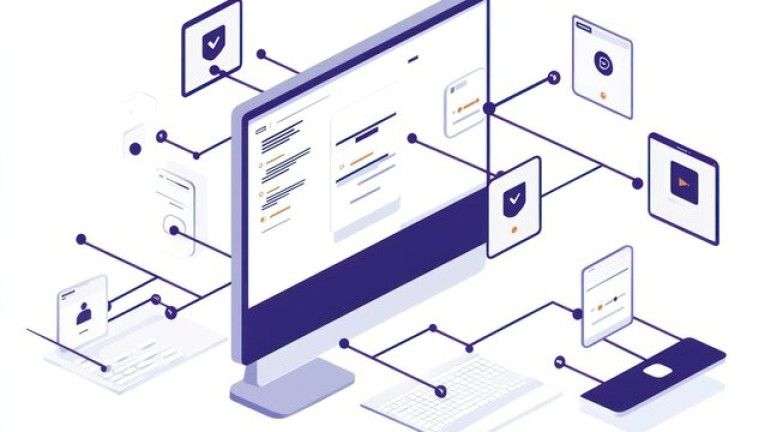The world of blockchain technology is vast, with countless platforms and protocols emerging every year. One of the more intriguing innovations in this space is the Agoric blockchain, which aims to make blockchain-based decentralized applications (dApps) more accessible and secure through its unique approach to smart contracts. In this article, I will provide an in-depth exploration of Agoric, its features, its potential use cases, and why it stands out from other blockchain platforms.
Table of Contents
What is Agoric Blockchain?
Agoric is a blockchain platform designed to enable developers to create secure, scalable, and composable decentralized applications (dApps). Its key innovation lies in the ability to write smart contracts in JavaScript, making it much easier for a broader group of developers, including those without a deep background in blockchain technology, to get involved. Agoric’s architecture is built on the Cosmos SDK, which offers interoperability with other blockchains within the Cosmos ecosystem.
The Agoric blockchain addresses several key challenges that other platforms have struggled with, such as security, composability, and scalability. The main focus of Agoric is to create a blockchain ecosystem that is not only secure but also easy for developers to use.
Key Features of Agoric Blockchain
1. Smart Contracts in JavaScript
Agoric’s standout feature is its approach to smart contracts. Traditionally, blockchain platforms like Ethereum require developers to write smart contracts in low-level programming languages like Solidity. This can be a barrier for many developers who are not familiar with these languages. Agoric changes that by allowing developers to write smart contracts in JavaScript, a language that is widely known and used across the world. By using JavaScript, Agoric lowers the barrier to entry for blockchain development and makes it easier to build dApps without needing to learn a new programming language.
2. Security Through Object-Oriented Programming
Security is a crucial factor in blockchain development. Smart contracts, if not written properly, can contain vulnerabilities that hackers can exploit. Agoric addresses this by using secure object-oriented programming (OOP) principles. In Agoric, smart contracts are composed of “objects” that are isolated from one another, ensuring that one vulnerable contract doesn’t compromise the entire system. This OOP approach provides an added layer of security that is not commonly found in other blockchain platforms.
3. Composability
Composability refers to the ability to combine different blockchain protocols or dApps to create new, more complex systems. Agoric excels at composability. Its platform allows developers to easily integrate various smart contracts and components from different decentralized applications, enabling the creation of a wide variety of innovative solutions. This feature fosters a more interconnected ecosystem where different projects can work together seamlessly.
4. Interoperability with Cosmos
Agoric is built using the Cosmos SDK, which allows it to interact with other blockchains within the Cosmos network. This interoperability is one of the key advantages of Agoric. It means that Agoric-based dApps can interact with other blockchains, enabling a more diverse and interconnected ecosystem. Developers can create decentralized applications that can interact with different blockchains, making the Agoric platform more versatile.
5. Economic Security Model
One of the challenges in blockchain ecosystems is ensuring that the network remains economically secure. Agoric addresses this by using a staking model that ensures economic incentives align with the security of the network. Validators on the network stake tokens to secure the blockchain, and they are rewarded for their work. This staking mechanism ensures that the network remains decentralized and secure while providing rewards to those who help maintain the system.
Comparison: Agoric vs. Other Blockchain Platforms
To better understand what sets Agoric apart from other blockchain platforms, let’s compare it to some of the more well-known blockchain ecosystems, such as Ethereum and Polkadot.
| Feature | Agoric | Ethereum | Polkadot |
|---|---|---|---|
| Smart Contract Language | JavaScript | Solidity | WebAssembly (Wasm) |
| Security Model | Object-Oriented Programming | EVM-based security model | Shared security with parachains |
| Composability | High | Medium | High |
| Interoperability | High (Cosmos SDK) | Medium (ETH2.0 in development) | Very High (Cross-chain messaging) |
| Scalability | High | Medium | Very High |
| Developer Access | Easy (JavaScript) | Moderate (Solidity) | Moderate (Wasm) |
As we can see, Agoric’s focus on JavaScript for smart contracts makes it a great choice for developers who want an easy entry into blockchain development. While Ethereum is the most widely known blockchain platform, its use of Solidity may create a barrier for many developers. Polkadot, on the other hand, excels in interoperability but uses a more complex framework for developers.
How Agoric Works: A Deeper Dive
To fully appreciate the potential of Agoric, it’s important to understand its technical foundations. At the heart of the Agoric blockchain is a secure and composable virtual machine that executes smart contracts. Agoric uses an approach known as the “object-capability” model, which ensures that each smart contract can only interact with other contracts in a controlled manner.
In more traditional blockchains, smart contracts often share memory space, which can lead to security risks. Agoric prevents these risks by using the object-capability model, where each contract is isolated in its own memory space. This means that a breach in one contract will not compromise the entire system. It’s similar to having a secure sandbox where each contract is restricted to its own environment.
Real-World Use Cases for Agoric
Let’s look at some real-world scenarios where Agoric can be applied to solve problems that traditional systems struggle with.
1. Decentralized Finance (DeFi)
Agoric’s composability feature makes it an ideal platform for DeFi applications. Developers can build DeFi protocols that integrate with other decentralized finance tools, creating more complex and efficient financial systems. Imagine a decentralized lending platform that can seamlessly interact with a decentralized exchange or a stablecoin. Agoric’s ability to easily combine different components is perfect for the fast-growing DeFi space.
2. Tokenized Assets
The tokenization of assets, such as real estate or art, is another promising application of Agoric. Agoric’s object-oriented programming approach ensures that the smart contracts governing these assets are secure, which is essential when dealing with high-value items. Furthermore, the composability feature allows for the creation of complex financial instruments that can be traded or used as collateral.
3. Supply Chain Management
Agoric’s composability and security also make it well-suited for supply chain management. A supply chain is often made up of multiple players, from manufacturers to distributors to retailers. Agoric’s ability to create secure, composable smart contracts means that different participants in the supply chain can interact with each other through decentralized applications. This can improve transparency and efficiency in the supply chain, reducing fraud and delays.
Agoric’s Economic Model
Like many other blockchain platforms, Agoric has a native cryptocurrency called the “Agoric token” (often referred to as the “AGE” token). The AGE token is used to pay for transaction fees on the network, as well as to stake for network security. Validators on the Agoric network are rewarded with AGE tokens for securing the network and validating transactions. The staking mechanism ensures that validators have an economic incentive to maintain the security of the network, and users who hold AGE tokens can participate in the governance of the Agoric blockchain.
Conclusion: Is Agoric the Future of Blockchain Development?
Agoric stands out in the crowded world of blockchain platforms by offering a unique approach to smart contracts, security, and composability. By allowing developers to write smart contracts in JavaScript, Agoric lowers the barrier to entry for blockchain development, making it more accessible to a wider audience. Its object-oriented security model and focus on composability ensure that Agoric can scale to meet the demands of decentralized applications in a secure and efficient manner.
While there are certainly challenges to overcome, particularly in terms of adoption and developer education, Agoric has the potential to become a key player in the blockchain space. For developers who are looking for a more accessible and secure way to build decentralized applications, Agoric is a platform worth keeping an eye on.





